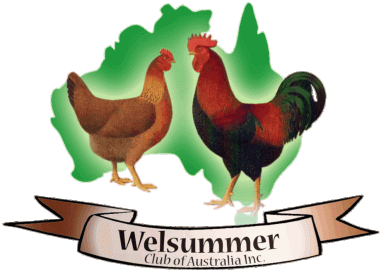Named after Welsum, the Dutch village of its origin, this breed has many others in its pedigree. It was made early in the twentieth century by a variety of crosses of Cochins, Partridge Wyandottes, Partridge Leghorn, Barnevelders and Rhode Island Reds. Although classified as a light breed it is true dual-purpose fowl, producing plump young males, and young females that lay good numbers of large rich brown eggs which are sometimes mottled with deep brown spots.
First exhibited in 1921 at the Hague, Netherlands at the First World Poultry Congress
They became popular due to the lovely dark brown hue of their eggs. The Bantam variety was created in the 1930s, by enthusiasts from Germany and England.
Timeline
| 1910 | •A farmyard fowl that laid large brown eggs was developed possibly from Langshans and other Asiatic breeds in the village of Welsum, Netherlands. •These fowls first attracted attention when an egg market was formed in the district. •The fowls varied in type and colour with some resembling Partridge Cochins and Wyandottes while some were more like Malay and Brahma and some had 5 toes |
| 1910-13 | •Crossings with Rhode Island Red, Partridge Leghorns and Barnevelders were made, the later improved egg colour. •Many birds were lost to an outbreak of Kleins disease. •Some uniformity was developed in a line bred by Voorhurst |
| 1918-21 | •Voorhurst had only 12 of his Welsummers left in 1918 after the war. •He bred up numbers and focusing on uniformity and large brown eggs. •Evidence of the breed in the UK in 1919. |
| 1921 | •Welsummers were first exhibited by Voorhurst at the First World Poultry Congress at Hague, Netherlands •The birds exhibited showed great uniformity and impressed British visitors. |
| 1922-23 | •Steps were taken to produce a Welsummer Standard in the Netherlands |
| 1927 | •A Dutch Assoociation for the Improvement of the Welsum Poultry Breed was founded. •It introduced a Standard for type and colour with emphasis on the Utility qualities. |
| 1928 | •A Standard was formed by the National Poultry Union of Holland. •Further importations of Welsummers were made to hte UK. •The British Welsummer Society was formed and adopted the Dutch Standard. •The first UK Welsummer Show was held at Crystal Palace where 11 cockerels and 17 pullets were exhibited. |
| 1929 | •The Dutch Standard was adopted in the UK by the British Welsummer Society.. |
| 1930 | •The Welsummer Club was formed in the UK absorbing the Society. The first secretary was Australian, Mrs A.M. Pape, daughter of George Churnside, a leading figure in the development of Australorps. •The British Welsummer Standard was revised. •143 Welsummer entries received at the 4th World Poultry Congress at Crystal palace, UK. •The first Welsummers were imported to Australia by Valencia Poultry in SA and displayed at the 56th Championship Show of SA P&K Club. •Eggs from Holland were brought into Australia by M.P. Rumble of Brisbane, Qld. •Welsummers were first brought to WA from SA and eggs from UK by Mr R Jordan of Belmont. |
| 1931 | •In the Harper Adams Laying Trials in the UK,”Shrewton Wonder” owned by Mrs Pape, laid 246 eggs in 48 weeks and 259 in 52 weeks. •Mrs Pape returned to Lilydale, Victoria from the UK with 3 cocks and 11 hens from her UK stud. |
| 1933 | •Mr G.E. Candler of Hamilton, Vic was assisted by Mrs Pape to import the 1st prize cockerel and pullet, the 2nd prize pullet and 3rd prize hen at Crystal Palace as well as Reserve Champion Cock at London Royal for a very high price. |
| 1930-40 | •Welsummers were very popular in Australia until WW2 and the development of commercial layers when numbers declined. •Poultry importations ceased in the late 1940’s. |
| 2015 | •Avgen (Lyn Campbell and Jan Sparks) released the first UK Welsummers resulting from importing 72 eggs from their UK breeding facility. Of these eggs, 45 chicks hatched in Australia from the dark egg UK Welsummers. |
| 2020 | •The Welsummer Club of Australia was formed by a small dedicated and enthusiastic group of Welsummer breeders. |
| 2021 | •The first Welsummer Feature was held in conjunction with the VP&K Club in Shepparton, Vic. |
